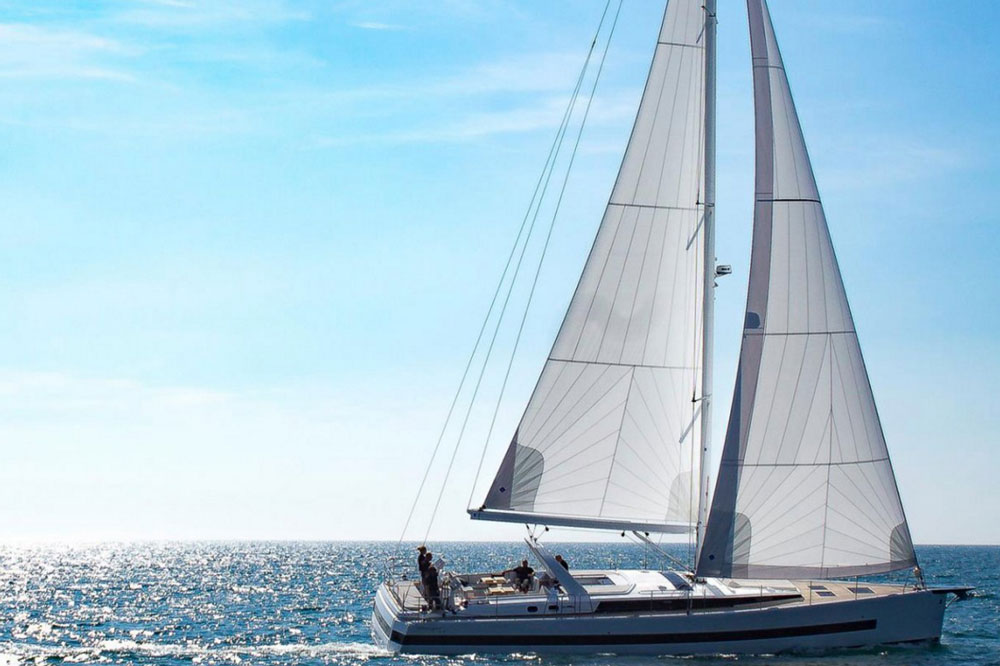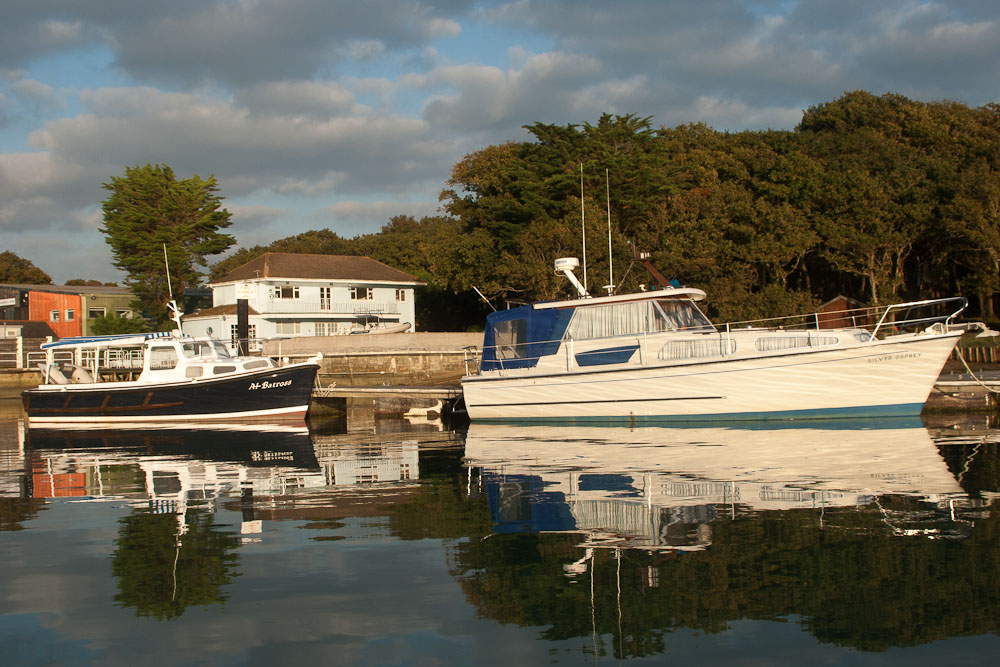No matter where or what you’re boating, a little knotcraft always comes in handy. We’ve all been there: stuck fiddling with a jammed bowline when a figure-eight would do. From beginners to seasoned sailors, all of us can benefit from a refresher in the basics. So avoid tying yourself up in knots, and catch up on these five essential boat knots.
Knots, hitches and bends
Knotcraft is an ancient art. Predating writing, it marks the development of civilisations all around the world. That means that tying knots connects us to our ancestors as we handle rope out on the water just like they did. It also means knots and their names have old, peculiar and sometimes contradictory traditions. Most now agree, though, that they broadly fall into three categories. The first category of knots is called knots (confusing, we know) and are tied on the end of a line (a rope in use). Hitches, meanwhile, are used to attach a line to something else, such as a cleat. And bends are used to “bend” (attach) two lines together.
Bowline knot
If you learn only one knot, it should be the bowline. Easy to tie and untie, the bowline creates a noose at the end of the rope and is ultra-versatile. It can attach a mooring line to a post or ring, tie two ropes together, and even works as a rescue knot. To tie it, remember the old sailors’ mnemonic: “the rabbit comes out of the hole, goes around the back of the tree, and then jumps back into the hole”. In other words, make a small loop by crossing two sides of the line, then thread the loose or “working” end (the rabbit) through the loop (the hole), then around the back of the “standing” end (the tree) and back through the same hole. Tighten the knot by pulling both ends.
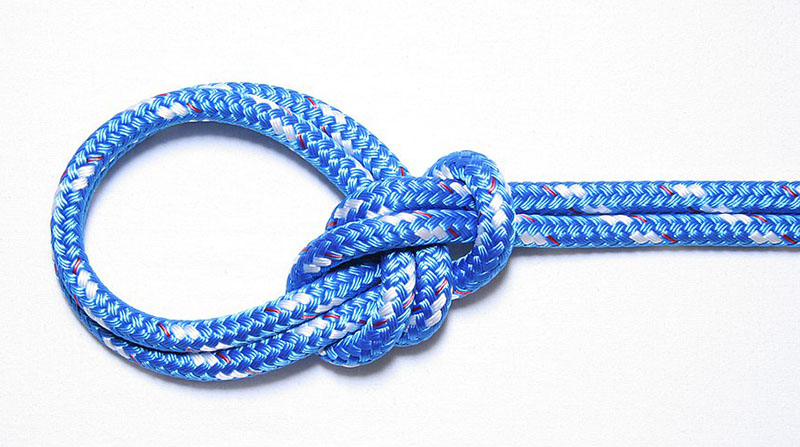
Figure-eight knots
The figure-eight is one kind of “stopper” knot, usually used to stop a line from pulling through a retaining device such as a block. It’s easy to loosen even after heavy strain, and, unlike the bowline, it cannot jam. To tie it, cross the line over itself to form a loop, then again, this time underneath, before doubling back over itself into the loop – forming a neat figure of eight. The clue’s in the name!
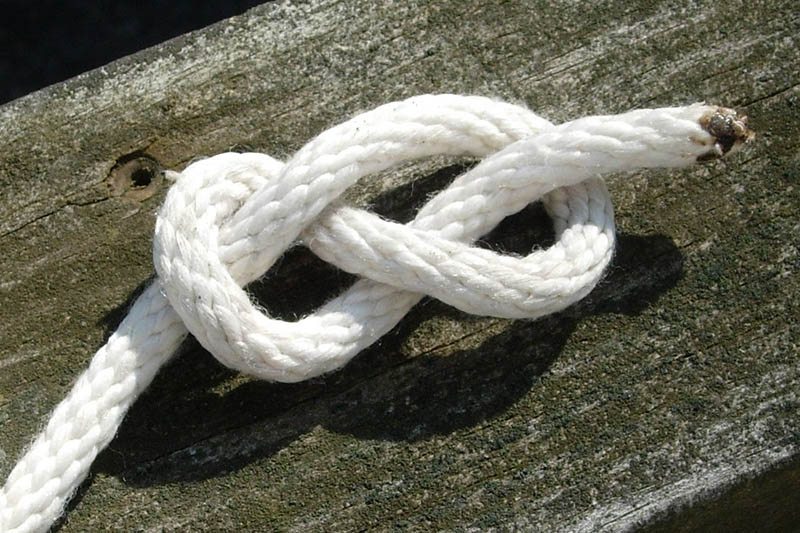
Cleat hitch
This hitch wraps a line around a cleat, on your boat or on the dock – so you’ll get the hang of it fast. Start by wrapping the line around the middle of the cleat, first underneath its far “horn” and then the nearer one, making a loop back around and over the standing end. Now pass over the top of the cleat and then bend around underneath the far horn and back over the top towards the near horn. Finally, do almost the same in reverse on the near side – passing under the horn and around to make a figure of eight – but this time thread the working end underneath the loop you just made, and pull.
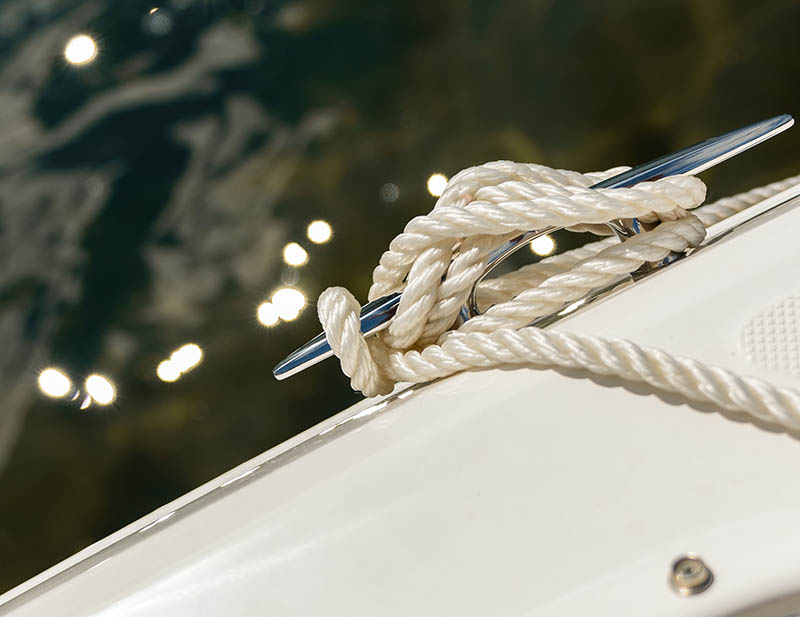
Half hitch
Not so much a knot in itself, this hitch or “overhand knot” is used to secure the line in combination with other, stronger knots. Easy as pie, just cross the working end over the line, then make a loop back underneath and over the loop you just made. Most commonly, you’ll use two of these in a row (two half hitches), often after making a “round turn”: simply wrapping the line around whatever you’re hitching to. That will do for securing a dock line to a piling or pretty well anything else.
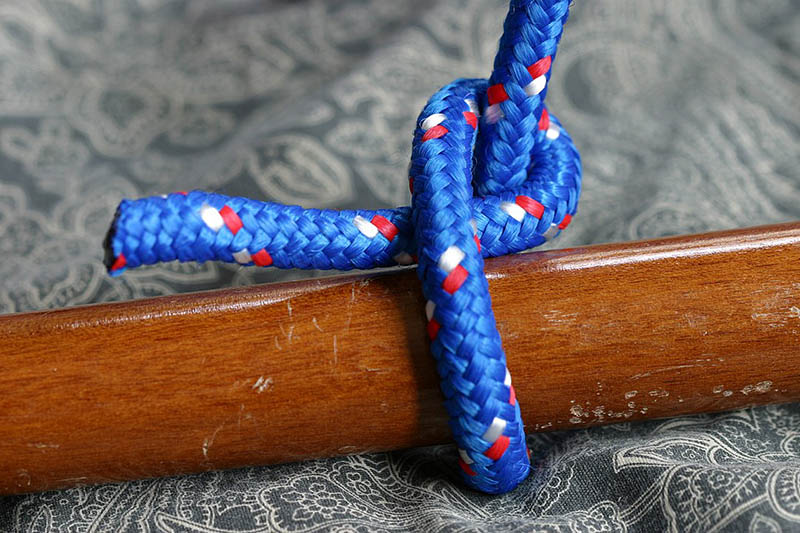
Clove hitch
This one’s less secure than multiple half-hitches, but it’s quick and will do for hanging fenders or as a temporary mooring knot. Simply loop the line around whatever you’re hitching to, bringing the working end back over the line and then making a loop back around the object in the opposite direction. Pass back around and underneath the loop you just made and pull the end away from where you started (e.g., if you were hanging a fender, pull vertically up).
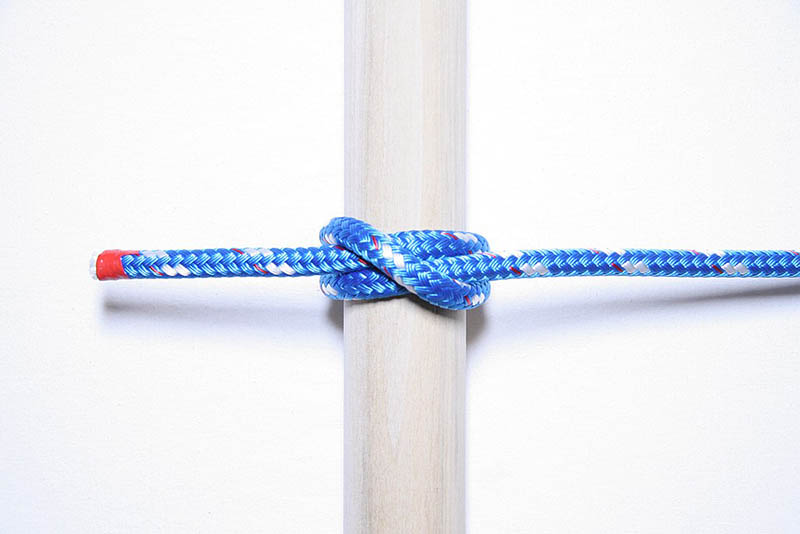
Once you’ve got the hang of these, you can move on to the tough stuff: sheet and anchor bends, reef knots, maybe even a zeppelin! But these basics will stand you in good stead on any boat, and on your way to mastering every line on a sailboat. Just check you’ve got all your safety gear, and you’re good to go.
Images: Bowline: USCG PTC Developer, CC BY-SA 4.0 via Wikimedia Commons / Figure-eight: Just plain Bill, CC BY-SA 3.0 via Wikimedia Commons / Cleat hitch: Adrian Hernandez via Unsplash / Half hitch: CC BY-SA 3.0, via Wikimedia Commons / Clove hitch: USCG PTC Developer, CC0, via Wikimedia Commons
